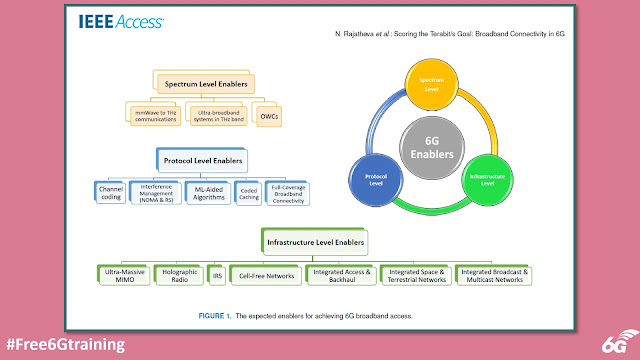With all the different 6G related information and publications being churned out at rapid pace, it is sometimes important to go back and look at basics to understand it better. In a post early last year, we looked at how to achieve Terabit/s Goal in 6G Broadband Connectivity. In that post we pointed out a paper that discussed this topic in detail. In a new short video, Prof. Emil Björnson goes back to this paper and briefly explains how:
The arXiv link of the paper is here (PDF). Abstract as follows:
This paper explores the road to vastly improving the broadband connectivity in future 6G wireless systems. Different categories of use cases are considered, with peak data rates up to 1 Tbps. Several categories of enablers at the infrastructure, spectrum, and protocol/algorithmic levels are required to realize the intended broadband connectivity goals in 6G. At the infrastructure level, we consider ultra-massive MIMO technology (possibly implemented using holographic radio), intelligent reflecting surfaces, usercentric cell-free networking, integrated access and backhaul, and integrated space and terrestrial networks. At the spectrum level, the network must seamlessly utilize sub-6 GHz bands for coverage and spatial multiplexing of many devices, while higher bands will be mainly used for pushing the peak rates of pointto-point links. Finally, at the protocol/algorithmic level, the enablers include improved coding, modulation, and waveforms to achieve lower latency, higher reliability, and reduced complexity
You may also be interested in other posts featuring Prof. Emil Björnson below.
Related Posts:
- Free 6G Training: Achieving the Terabit/s Goal in 6G Broadband Connectivity
- Free 6G Training: Do we need more Bandwidth or Higher Bandwidth Efficiency?
- Free 6G Training: Communications Using Intelligent Reflecting Surfaces in B5G & 6G
- Free 6G Training: Can Ultra Massive MIMO deliver Terabit/s Broadband Connectivity in 6G?
- Free 6G Training: Intelligent Reflecting Surfaces (IRS) for Wireless Communications


Comments
Post a Comment